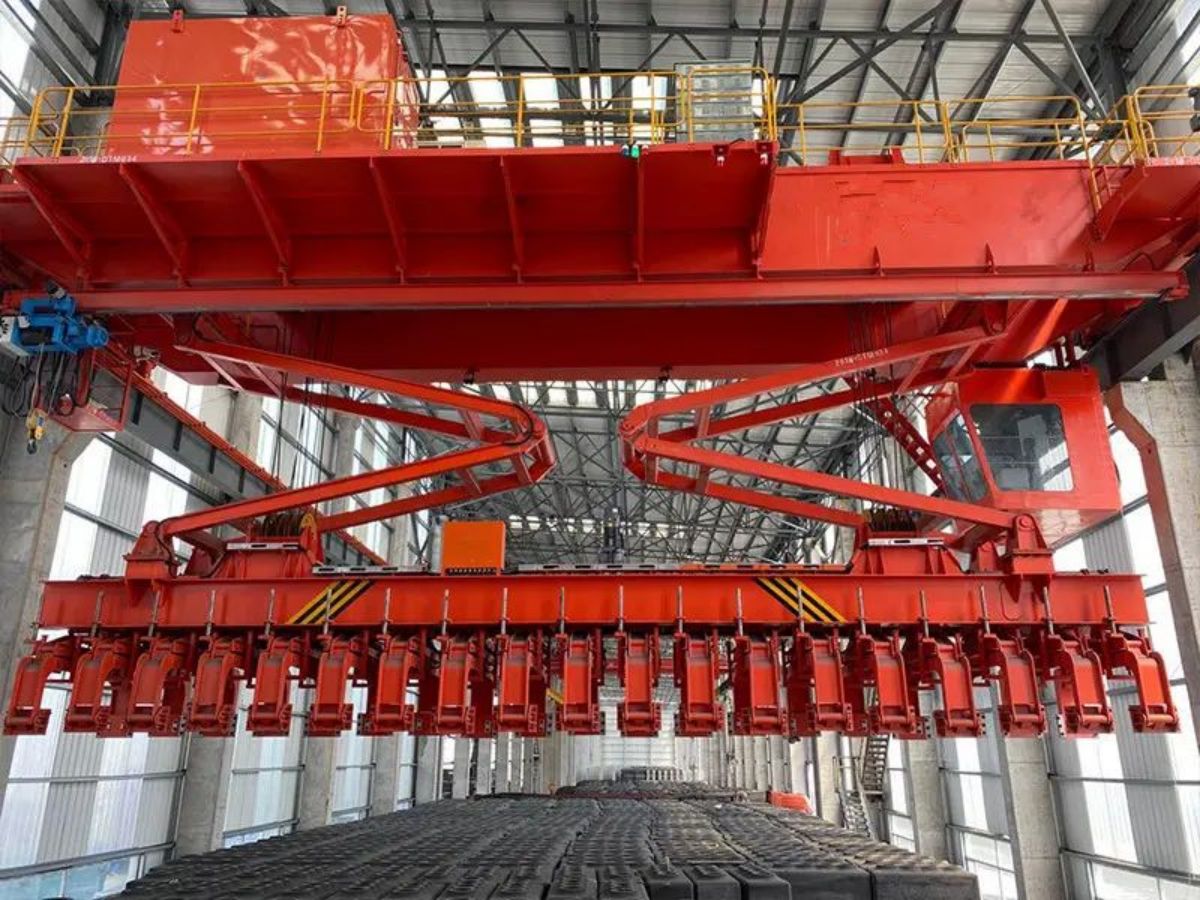Anode Carbon Overhead Crane vs. Gantry Crane: Which Offers Better Stability for Heavy Loads?
Anode Carbon Overhead Crane vs. Gantry Crane: Which Offers Better Stability for Heavy Loads? When it comes to handling heavy loads in industrial settings, choosing the right crane is crucial. The stability of the crane plays a vital role in ensuring the safety of workers and the efficient handling of materials. In this article, we will compare two popular types of cranes, the Anode Carbon Overhead Crane and the Gantry Crane, and explore which one offers better stability for heavy loads.
1. Understanding Anode Carbon Overhead Crane
Anode Carbon Overhead Crane is a specialized type of crane designed specifically for the handling of anode carbon blocks in the aluminum and steel industries. These cranes are built to withstand the harsh conditions of these industries and provide exceptional stability when lifting and moving heavy loads. The design of the Anode Carbon Overhead Crane ensures that the load remains stable throughout the lifting process, minimizing the risk of accidents or damage to the materials.
2. Exploring Gantry Crane
Gantry Cranes are widely used in various industries for their versatility and stability. These cranes feature a bridge supported by legs that can move along rails, allowing for efficient load handling in a wide range of applications. Gantry Cranes are known for their exceptional stability, making them suitable for heavy load lifting. The design of a Gantry Crane ensures that the load remains balanced even when moving horizontally, providing a secure and stable platform for material handling.
3. Stability Comparison
When comparing the stability of Anode Carbon Overhead Crane and Gantry Crane for heavy loads, it is important to consider the specific requirements of the application. Anode Carbon Overhead Crane is specifically designed for the handling of anode carbon blocks and provides excellent stability for this particular task. The crane's design ensures that the load remains stable throughout the lifting and moving process, minimizing the risk of accidents or damage.
On the other hand, Gantry Cranes offer a high level of stability for heavy loads in a wide range of applications. The bridge design, supported by legs and moving along rails, provides a secure and stable platform for material handling. Gantry Cranes are known for their versatility and ability to handle different types of loads, making them a popular choice in industries where heavy loads need to be lifted and moved.
4. Factors Influencing Stability
Several factors can influence the stability of both Anode Carbon Overhead Crane and Gantry Crane. These factors include the design of the crane, the quality of construction, the load capacity, the operating environment, and the maintenance practices. It is important to consider these factors when choosing a crane for heavy load handling, as they can significantly impact the stability and overall performance of the crane.
5. Load Capacity
Load capacity is a crucial factor to consider when evaluating the stability of a crane. Both Anode Carbon Overhead Crane and Gantry Crane come in various load capacities, allowing for the handling of heavy loads. However, it is essential to ensure that the selected crane has a load capacity that exceeds the maximum weight of the materials being handled. This ensures that the crane operates within its safe working limits and maintains stability during the lifting and moving processes.
6. Operating Environment
The operating environment also plays a significant role in the stability of the crane. Anode Carbon Overhead Crane is specifically designed for the aluminum and steel industries, where the conditions can be harsh. These cranes are built to withstand extreme temperatures, corrosive materials, and other challenging factors, ensuring their stability in such environments. Gantry Cranes, on the other hand, are versatile and can adapt to different operating environments, providing stable performance in various industries.
7. Maintenance Practices
The maintenance practices employed for both Anode Carbon Overhead Crane and Gantry Crane can greatly affect their stability. Regular inspections, repairs, and adherence to maintenance schedules are crucial for ensuring the safe and stable operation of the cranes. Neglecting maintenance can lead to issues such as instability, decreased load capacity, and increased risk of accidents. Proper maintenance practices should be followed for both types of cranes to ensure their stability and longevity.
8. Safety Considerations
Ensuring the safety of workers and materials is of utmost importance in any industrial setting. Both Anode Carbon Overhead Crane and Gantry Crane prioritize safety and stability. However, the specific safety features and considerations may vary between the two types of cranes. It is essential to evaluate the safety features offered by each crane and assess their suitability for the application at hand. Safety considerations should always be a top priority when choosing a crane for heavy load handling.
9. Cost Considerations
Cost is another crucial factor to consider when deciding between Anode Carbon Overhead Crane and Gantry Crane. The cost of each crane can vary depending on factors such as load capacity, features, and customization options. While Anode Carbon Overhead Cranes are specifically designed for the handling of anode carbon blocks and may have a higher initial cost, Gantry Cranes offer versatility and can be used for various applications, potentially providing a better return on investment in the long run.
10. Conclusion
When it comes to choosing a crane for heavy load handling, both Anode Carbon Overhead Crane and Gantry Crane offer excellent stability. The specific requirements of the application, load capacity, operating environment, maintenance practices, safety considerations, and cost factors should all be carefully evaluated to make an informed decision. Ultimately, selecting the crane that best meets the needs of the industry and ensures the safety and stability of heavy loads is crucial for ensuring efficient and successful material handling operations.

